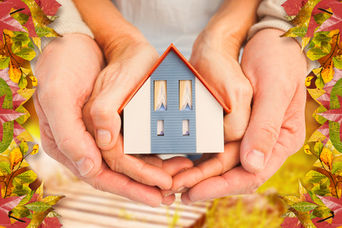Staying healthy in a tight house
According to the German Energy Saving Ordinance (EnEv), good thermal insulation is mandatory for new buildings. But also when retrofitting energy-efficient equipment or when renovating existing buildings, it is necessary to fulfill certain energy requirements. This benefits our environment and is good for your wallet. But doesn’t the heat also keep humidity and pollutants in the house? Read here which precautions should be taken.
1. Providing a leak-tight seal
Buildings consume almost 40 percent of total energy in Germany. Up to 85 percent of this energy “goes up the chimney”. Common causes are uninsulated exterior walls and leaks in the building envelope. These problems can be remedied, for example with the help of an external thermal insulation composite system (ETICS). It consists of prefabricated components that are installed on the facade. Rigid polystyrene foam and mineral wool are the insulation materials of choice. The latter is also well suited for insulating the roof. The windows should be equipped with double or triple glazing and insulated profiles. Replacing the old window gaskets by new ones made of plastic or silicone can already work wonders. Exposed heating pipes can be covered with insulating elements from the DIY store and gaps underneath doors can be sealed with door brush strips. As a result, residents save heating costs, comply with legal requirements and protect the climate.
2. Proper heating and ventilation
Many builders and renovators fear that living in a well-insulated house will be like living in a “plastic bag”. The walls can no longer “breathe”, they believe. But with a few tricks, the exchange of air will not be affected. It can even be cleverly controlled instead of driving energy costs up. Regular (purge) ventilation is essential: with the windows wide open, air the house briefly but intensely. Alternatively, a regular flow of fresh air can be provided by suitable ventilation systems. This allows moisture to escape – moisture that is produced in every household by breathing, sweating, cooking, showering and cleaning. The combination of proper ventilation and heating (always leave the heating to run at low temperature in winter) removes the breeding ground for mold.
3. Low-emission building materials
Insulation and other building materials should be absolutely healthy for living, because pathogens cannot simply be eliminated by ventilation. A Europe-wide recognized indicator for low-emission products is the EMICODE® seal. It is clearly visible on the packaging and familiar to professional craftsmen. The GEV EMICODE® system carefully examines the health and environmental compatibility of various building materials. These include, for instance, all layers of the floor structure, insulation and wall panels as well as sealing products for windows and facades. Regular spot checks by independent experts and testing institutes guarantee long-term compliance with the emission limit values.

©Wavebreak Media Ltd /123rf.com
Share article on Social Media:
